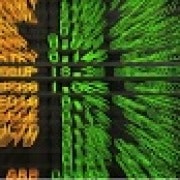What to expect from US stocks before and after the Fed's rate rise
Last week the Federal Open Market Committee surprised a lot of pundits by doing what it has said it would do.
The FOMC announced a further reduction of its extraordinary bond buying program -- quantitative easing, or QE3 -- in which the central bank adds liquidity by purchasing Treasuries and mortgage-backed securities.
In September, the Federal Reserve will buy only $15 billion in government-linked securities, down from $85bn a month late last year, and will likely end QE in October. That’s been baked in the cake for some time.
What surprised some people, but really shouldn’t have, was the FOMC’s declaration it would keep rates low for a “considerable time” after the central bank ends QE.
Those two magic words mean the Fed won’t raise the federal funds rate from around zero in the near future, despite inflation hawks’ efforts to paint the central bank as “behind the curve.” (Two dissenting FOMC hawks, Charles Plosser, president of the Federal Reserve Bank of Philadelphia, and Richard Fisher of Dallas, will step down next northern spring.)
Here’s what Fed chair Janet Yellen said after the meeting:
“There are still too many people who want jobs but cannot find them, too many who are working part time but would prefer full-time work, and too many who are not searching for a job but would be if the labour market were stronger.”
Hello?! Doesn’t anyone remember Yellen is a dove who’s still focused on the employment side of the bank’s dual mandate? Or are you still shocked -- shocked -- there’s gambling in Casablanca?
Nonetheless, at some point, even Janet Yellen will have to raise interest rates to fend off an inflationary surge of the kind she has promised to forestall.
The debate now is over when the rate hike will happen in 2015 -- the northern spring or summer. It’s a foolish discussion and impossible to predict, even for people whose livelihood depends on calling Fed turns and market tops.
What’s more important is what the markets will do when the Fed finally gets around to boosting short-term rates and returning them to “normal,” whatever that means.
Well, actually, it’s more about what will happen before and after rates start rising, because the stock market, as we know, anticipates big economic changes like rate hikes and recessions months ahead.
And there, market history suggests long-term optimism but short-term caution.
Sam Stovall, S&P Capital IQ’s US equity strategist, recently tracked Fed interest rate hikes going back to the end of World War II.
“In 13 of the 16 times the Fed raised rates, the market went into a pullback, correction or bear market” in the six months before the rate hikes began, he told me in a phone interview last week.
In the years since 1946, Stovall found six pullbacks (a 5 per cent to 10 per cent decline), four corrections (when stocks fell from 10 per cent to 20 per cent) and three bear markets (a drop of 20 per cent or more) began in the six months before the Fed started tightening. He used the S&P 500 Index for his research.
The S&P 500 lost 16 per cent of its value, on average, during those declines, but it fell slightly less in the six months after rate hikes began.
“We had pullbacks, corrections and bear markets start more often in the six months before [a rate increase] than the six months after,” he told me.
Altogether, Stovall wrote last week, “88 per cent of the time, the markets were thrown into a pullback or worse when an initial rate hike was a possibility or reality.” That means “a very high likelihood that the S&P 500 will begin a decline of 5 per cent or more within six months” of the Fed’s first hike.
Sounds depressing. Yet if you look at the numbers somewhat differently, the S&P 500 “was back in the black and up an average 1.3 per cent” within six months after the first rate increase, Stovall wrote.
The point is that although the prospect of a new Fed rate-tightening cycle brings out the fear in investors’ reptilian brains -- and even the great Marty “don’t fight the Fed” Zweig believed in selling on the Fed’s second rate increase -- it need not lead to long-term losses.
In fact, that fear may cause investors to sell way too early when waiting it out would be a better strategy. It usually is.
Despite the prospect of higher rates and an accompanying sell-off, Stovall and S&P Capital IQ’s Investment Policy Committee think the S&P 500 will hit 2,200 in 12 months.
If you believe rate hikes are coming, yet don’t want to miss major market gains, you might want to focus on sectors that usually outperform when rates on 10-year Treasury notes rise.
“Historically in a rising interest rate environment, technology, energy and materials are your best performers because it’s later in the cycle and inflation pressures build,” Stovall told me.
Of course, there’s an ETF for that -- several, actually. The SPDR Sector Technology Energy and Materials ETFs should do the trick. I prefer equal-weighted sector ETFs, whose US ticker symbols are RYT for tech, RYE for energy, and RTM for materials.
You should avoid interest-rate-sensitive groups like financials, utilities and telecom, which Stovall said are “more like bond substitutes.”
And, of course, stay away from long-dated bonds themselves and dump riskier securities tied to lower interest rates, as Janet Yellen herself recently recommended. She should know, shouldn’t she?
Howard R. Gold is a MarketWatch columnist and founder and editor of GoldenEgg Investing, which offers simple, low-cost, low-risk retirement investing plans. Follow him on Twitter @howardrgold.
















